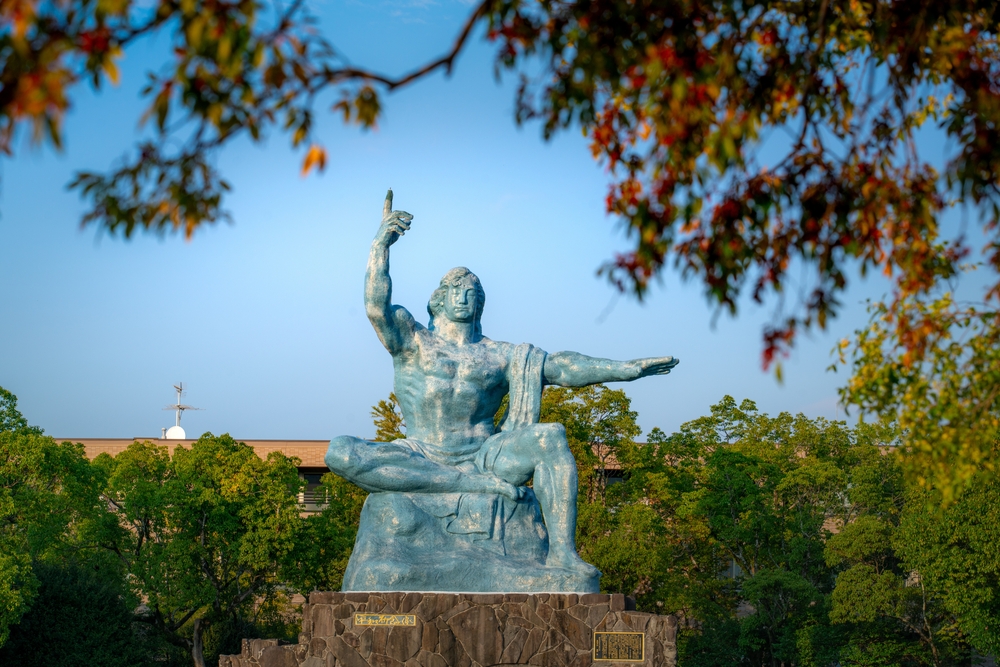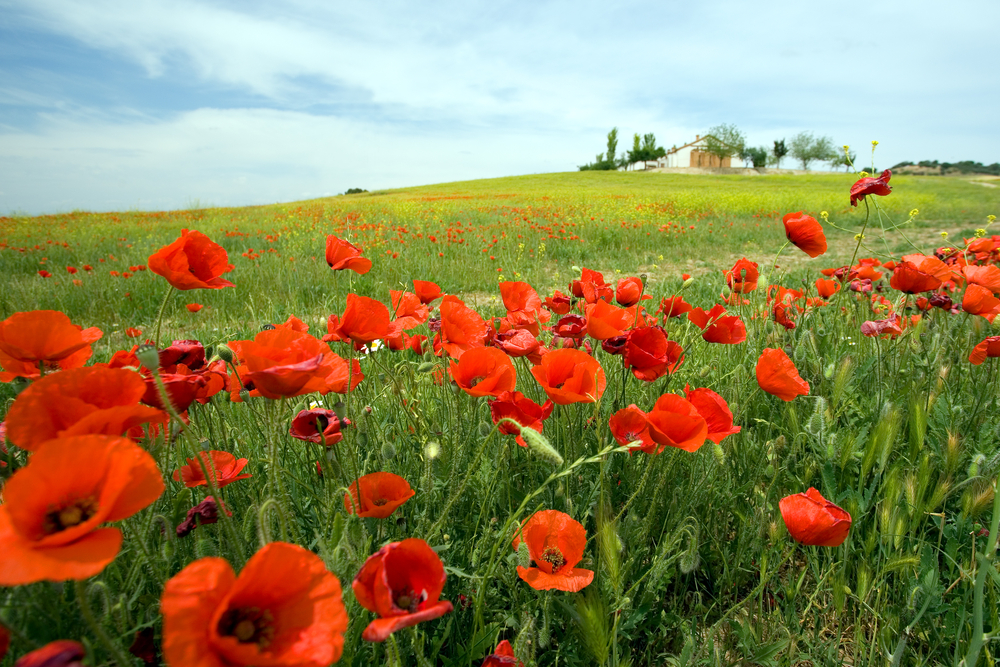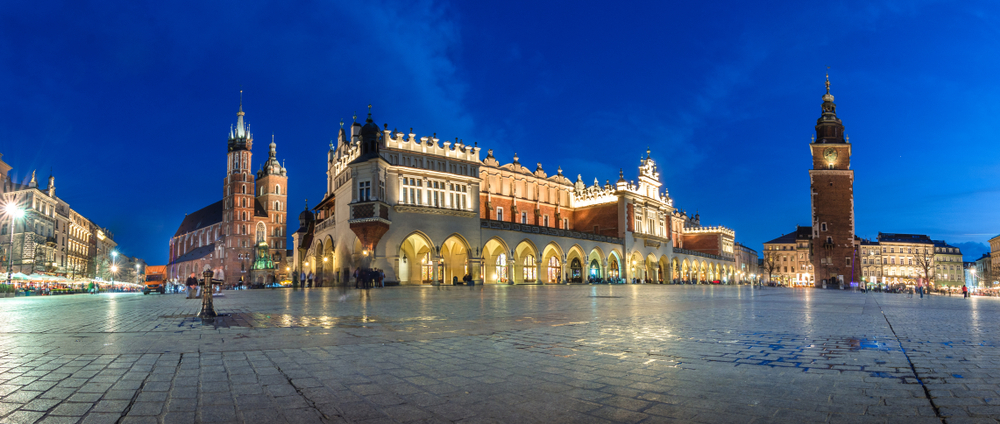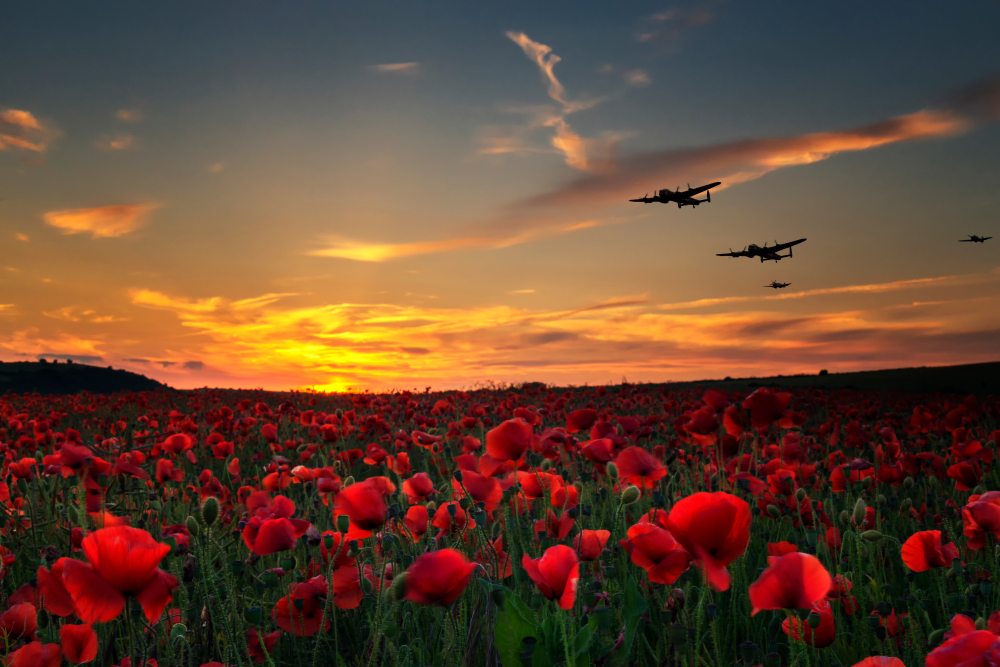Dear Travellers,
On November 11, we pause to remember the courage and sacrifice of Canadians who fought to protect our freedoms. Those we lost endure in the stories we tell and the gratitude we feel for their actions.
If you’d like to connect with those stories in a particularly meaningful way, you can walk where they walked and remember them where they fell. The Poppy Trail tour takes you on a moving journey through historic battlefields including the D-Day landing beaches, Vimy Ridge, and other important sites from both world wars.
Our Grand Japan Fall Foliage Cruise is a chance to experience that history from a different perspective, with Nagasaki’s moving memorials and tributes to peace. It’s a chance to dive into so much of Japan’s fascinating history, exploring Tokyo’s historic neighbourhoods, Kyoto’s ancient temples, Kanazawa’s geisha and samurai districts, and more.
Central Europe has a fascinating past all its own: join our Poland & Budapest Grand Tour for 15 days of culture, history, and scenic beauty. Tour Kraków, Gdańsk, Warsaw, and Budapest, explore salt mines, take a Hungarian cooking class and enjoy immersive experiences that bring history to life.
Did you get our latest brochure?
The tours mentioned here are just a sample of all the amazing trips we have lined up for 2026. Browse the digital version today and start planning your next adventure!
Happy travels,

Danny Shay, President
Senior Discovery Tours

A Trip To Remember: Visiting Canadian D-Day Sites in Normandy
The D-Day invasion was a turning point in the Second World War. When Allied forces stormed the beaches of Normandy, they opened the door to the liberation of Western Europe. Canadian forces played a major role in D-Day and there’s nothing quite as moving as seeing the sites where they fought, fell, and ultimately prevailed.
These five places in Normandy tell important Canadian stories:
Canadian Memorial Garden at the Abbaye d’Ardenne
Just after the D-Day landings, 20 young Canadian prisoners of war were executed here by German forces. You can visit the memorial that honours those soldiers and offers a place of quiet reflection.
Verrières Ridge
One of the most harrowing battle sites of the Normandy campaign, this ridge was fiercely defended by German troops. Canadians suffered heavy casualties in their effort to break through, making it a powerful reminder of sacrifice and resilience.
Juno Beach Centre
This remarkable museum, situated on one of the beaches where Canadian forces landed, chronicles the full scope of Canada’s involvement in the war. Experience interactive exhibits, read personal accounts, see fascinating artifacts, and learn the stories of the brave Canadians who helped the Allies win the war.
Queen’s Own Rifles House in Bernières-sur-Mer
One of the first buildings liberated by Canadian troops on June 6, 1944, this modest stone house still stands at the water’s edge.
Canadian Cemetery at Bény-sur-Mer
This quiet cemetery is one of Normandy’s most moving sites. More than 2,000 Canadians are laid to rest here, with each white headstone representing a story of bravery and loss.
Explore these poignant places and more on The Poppy Trail, a tour that offers unforgettable moments from both world wars through France and Belgium. Join us next spring to experience the places where history was made.

Where History Stands Still: Nagasaki’s Peace Park
In a quiet valley surrounded by green hills, Nagasaki’s Peace Park is a place where time holds its breath: at 11:02 a.m. on August 9, 1945, an atomic bomb reduced this thriving city to silence.
The Atomic Bomb Museum tells that story with clarity and compassion, blending artifacts, survivor testimonies, and multimedia displays to convey the impact of the blast. Charred lunch boxes, melted bottles, and photographs of the destroyed city paint a devastating picture, while moving exhibits focus on the resilience of lives rebuilt from the ruins.
From tragedy to peace
As you leave the museum, you enter Nagasaki Peace Park, a contemplative space that feels worlds away from the devastation it memorializes. The park’s centrepiece is the towering Peace Statue, a blue figure with one hand pointing to the sky (the source of the bomb) and the other extended in a gesture of peace. Around it stand monuments from dozens of countries, each expressing solidarity and hope.
Nearby, at the Hypocentre Park, a simple black monolith marks the exact spot where the bomb exploded. It’s a quiet, shaded area of remembrance where visitors often bow their heads and leave flowers.
Nagasaki will leave you with a renewed understanding of history and of the responsibility to remember and ensure a tragedy like this one never happens again.
Join us to experience Japan’s history and timeless beauty on our Grand Japan Fall Foliage Tour on the Diamond Princess sailing November 8 - 26, 2026. This unique cruise showcases Japan’s history, cultural treasures, and natural beauty, framed by brilliant fall colours.

Overnight Overture: Riding the Chopin Train to Budapest
As the sun sets over Kraków’s medieval rooftops, it’s time for an adventure: a trip on the Chopin Train. Fall asleep in Poland and wake up to a Budapest morning, refreshed and ready for a new adventure.
Savour local wines and tasty snacks as you make your way past farmland and forests, quiet villages and picturesque landscapes. When it’s time for some shuteye, your cabin is simple but comfortable, with a cozy bed, fresh linen, and sleep that comes easily with the gentle movement of the train.
As daylight breaks, you roll into Budapest: the Danube glimmers and the skylines of Buda and Pest come into view. Thermal baths and Art Nouveau cafés, grand boulevards and centuries-old castles, lively markets and quiet corners all beckon as you disembark.
A route with history
For decades, the Chopin Train has linked Poland and Hungary, transporting travellers long before budget airlines became Europe’s go-to for country-hopping. Named for Poland’s most famous composer, Frédéric Chopin, the train is a nod to the cultural ties between the two countries and the old-world charm of European night trains.
Join the grand tour
This overnight experience is part of our Poland & Budapest Grand Tour, a 15-day trip that includes Gdańsk, Warsaw, Kraków, and Budapest. Join us for a trip rich in culture, history and unforgettable experiences.

Why Do We Wear Poppies on Remembrance Day?
The red poppy as a symbol of remembrance goes back over a century, inspired by In Flanders Fields by Canadian soldier John McCrae. Written in 1915, the iconic poem talks about the resilient flowers that grew among the graves of the fallen.
In 1921, the Great War Veterans’ Association (an early predecessor of the Royal Canadian Legion) officially adopted the poppy for Remembrance Day. Today, millions of Canadians, Brits, Australians and New Zealanders wear it over their hearts each November to honour wartime sacrifices and remind future generations of the cost of freedom.

Why Travel With Us? Reason #9
Get rewards for travelling: As if travelling wasn’t rewarding enough, Senior Discovery Tours offers a number of ways of saying “thanks for choosing us!”
Our Discovery Rewards loyalty program takes it up a notch, with exclusive gifts and great savings on future tours. Sign up, it’s free! Plus, if you refer new travellers through our BlueSky Referrals program, you both get rewards.


.png)
